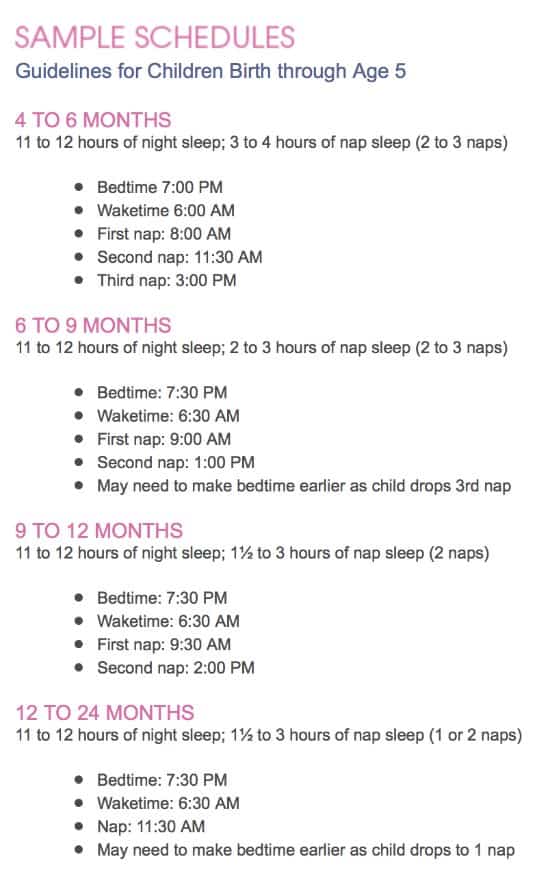Sweet Dreams: The Gentle Journey of Sleep Training Your 7-Month-Old
Hey there, lovely parents! Are you ready to embark on a wonderful adventure that leads to more restful nights for you and your precious little one? Well, buckle up because we’re diving into the cozy, dream-filled world of sleep training for your 7-month-old bundle of joy!
Before we get tucked in, let’s illuminate why this age is just perfect for sleep training. At 7 months, your cutie pie is developmentally ready for the ride. They can learn to self-soothe, they’re eating more solids, and their sleeping patterns are becoming more predictably mature. So, let’s sprinkle some starry-eyed wisdom with tips and tricks to help your baby learn the skill of blissful slumber!
Understanding Your 7-Month-Old’s Sleep Needs
Just like a snug onesie, we need to fit sleep training to your baby’s unique needs. Generally, 7-month-olds need about 14 hours of sleep a day, including naps. Listen to your baby’s sleep cues – the yawns, eye rubs, and fussiness – they’re their little way of saying, “Hey, I’m pooped!”
Step-By-Step Guide to a Peaceful Night’s Sleep
Every family is different, so let’s find the right sleep training approach for yours. Here’s a step-by-step guide on how to create a sleep-friendly environment and routine, tailor-made for your munchkin.
- Cozy Sleep Space: Create a sleep sanctuary that beckons sweet dreams. Ensure the room is cool, dark, and oh-so-comforting. A white noise machine can also work wonders, offering a soothing background hum for your snoozing babe.
- Rituals That Rock: Like your favorite lullaby, a bedtime routine that’s calm, predictable, and cuddle-filled sends signals to your baby that it’s time to hit the hay. Bath time, storytime, and a peaceful snuggle can set the stage for a night of sweet slumber.
- Chat down: Who doesn’t love a good night chat? Spend a few minutes before bedtime winding down with your little one. Gentle whispers and tender touches reassure them that all is well in their world.
Ready, set, sleep! Remember, it’s about patience, consistency, and lots of love. Your baby might not take to these changes overnight, but with your gentle guidance, they’ll soon be sleeping like a well-swaddled champ!
Choosing the Right Sleep Training Method for Your Family
Now, let’s navigate through the sea of sleep training techniques to find your family’s lighthouse. The Ferber Method, or graduated extinction, might appeal to parents ready for a more structured approach. But hey, if that’s not your cup of sleepy-time tea, there’s the gentler “no-tears” method, focusing on slow, comforting changes that lead to independent sleep without the waterworks.
Consistency Is Key
Here’s the golden rule of sleep training: consistency is the wand that works the magic. Stick to your chosen method and bedtime routine like a star to its constellation. Sure, there’ll be some bumps in the night, but remain steadfast, loving, and reassuring, and your little star will shine brightly through the night.
As we swaddle this beginning guide, remember, dear parent, that you got this! With tender loving care and a sprinkle of persistence, your little one will soon embrace the night with open arms and closed eyes. Next up, we’ll delve deeper into those sleep training methods, troubleshooting those common sleepy-time hitches, and understanding how to maintain a stardust-worthy sleep schedule for your 7-month-old.
So, slip into your coziest slippers and let’s continue this sleepy-time journey together, helping your baby to dream big and sleep soundly!

Five Essential Preparation Tips for Sleep Training Your 7-Month-Old
As we snuggle into the idea of sleep training, it’s time to prepare both your baby and yourselves for this night-time dance. Here are five key points to embrace:
- Understanding 7-Month-Old Sleep Patterns: At this age, babies’ sleep cycles are more defined, and REM sleep is more prominent. They experience lighter and deeper sleep phases, which is why establishing a consistent routine matters even more.
- Creating the Ideal Sleep Environment: A sleepy environment is more than just a crib and a lullaby. Consider room temperature (ideal around 68-72°F), blackout curtains for darkness, and a crib free of toys and blankets to create a minimalistic yet inviting space.
- Develop Rituals Beyond Bedtime: Sleep training isn’t just about the moments before bed. It’s about the whole day’s schedule—naps, feeding, play, and stimulation should all be in sync with your baby’s natural rhythms to foster better nighttime sleep.
- Easing Into Separation: For many 7-month-olds, separation anxiety starts peeking its head. Introduce short periods of healthy separation during the day to ease into the longer night-time separation that comes with sleep training.
- Self-Care for Parents: Prepare yourselves emotionally and physically for the sleep training process. The first few nights might be challenging, so line up support, whether from a partner, family member, or friend, to ensure you can also get some rest.
Building a Sleep Training Schedule
Timing is everything in the world of infant sleep just like it’s crucial for that perfect family photo. Let’s map out a schedule that suits your baby’s needs and brings synchrony to your day:
| Time | Activity |
|---|---|
| 6:30 AM – 7:00 AM | Wake-up and morning feed |
| 9:00 AM | Morning nap |
| 11:00 AM | Wake-up and feed |
| 2:00 PM | Afternoon nap |
| 4:00 PM | Wake-up and feed |
| 7:00 PM | Bedtime routine begins |
| 7:30 PM – 8:00 PM | Bedtime |
This is just a template, lovingly woven from the threads of sleep wisdom. Your baby is a delightful original, so feel free to adjust the schedule as needed!
Tackling Sleep Regression
Just when you think you’ve nailed it, along comes sleep regression, that cheeky little monkey wrench in your well-oiled routine. Here are a few comforting thoughts to help you through:
- Identify the Signs: Is your tot skipping naps, waking up more at night, or fighting bedtime? These might be signals of sleep regression. Don’t worry; it’s a perfectly normal blip on the baby radar.
- Consistency Wins the Race: Keep up with your established rituals and reassure your little one. This phase is temporary, and your loving consistency will help them adjust back to deeper dreamlands.
- Seek Support: There’s no shame in reaching for help. If sleep regression feels overwhelming, consult your pediatrician or a sleep consultant for guidance. You’re not alone on this moonlit path.
Above all, remember that sleep training is a journey with highs and lows, twists and turns. But with each other’s love and support, you’ll find your way to peaceful nights filled with the silence of satisfied sleep.
See more great Things to Do with Kids in New Zealand here. For more information see here
Disclaimer
The articles available via our website provide general information only and we strongly urge readers to exercise caution and conduct their own thorough research and fact-checking. The information presented should not be taken as absolute truth, and, to the maximum extent permitted by law, we will not be held liable for any inaccuracies or errors in the content. It is essential for individuals to independently verify and validate the information before making any decisions or taking any actions based on the articles.




